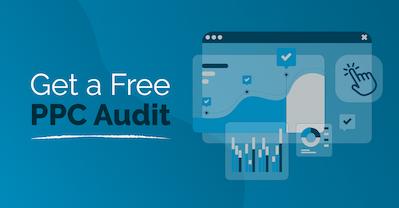There are more than 20 million eCommerce sites in the world and more are being created every day. What are you doing this year to sustain your footing in the competitive eCommerce space? Where do you plan to invest your time and money?
If you need some guidance or reassurance to verify you’ve got all of your ducks in a row, here are 50 eCommerce statistics that can lend a hand and help you conquer 2021.
We’ve broken down these statistics based on consumer behavior. Specifically, they tap into seven key areas:
- Digital marketing trends (organic and paid search, social media, and email marketing)
- Demographics
- Onsite user behavior
- Mobile trends
- Cart abandonment
- Payment methods
- Shipping/delivery methods
eCommerce Digital Marketing Trends
Nothing is permanent in digital marketing. It’s constantly changing, which means you need to consistently update and refine your online efforts.
You don’t need ambitious plans to stay on top of your eCommerce marketing. Sometimes, all it takes is tweaking small things, like key terms and the frequency of your messaging, to give your traffic and engagement a nice boost.
Here are some insightful eCommerce statistics on SEO/paid search, social media, and email marketing to give you some ideas.
SEO & Paid Search
1. 43% of eCommerce traffic comes from Google search (organic) and 26% comes from Google Adwords. (99firms, 2020)
2. Search traffic generated 65% of total eCommerce sessions in 2019—33% was generated from organic search and 32% was generated through paid search. (Hubspot)
3. Search engines drive 10x more traffic to shopping sites than social media. (Content Factory)
4. eCommerce advertisers spend on average $1,000 a month on Google ad campaigns. (SEMrush)
5. Health and beauty sectors experienced the highest growth of search traffic during 2020. (SEMrush)
Want more hard numbers about where and how your eComm customers find you? Read our ebook: “Why Every eCommerce Business Needs an Amazon SEO Strategy.”
Social Media
6. 40% of merchants use social media to boost sales. (Forbes)
7. 74% of consumers rely on social networks to make purchasing decisions. (Awario)
8. 84% of US online consumers look at a social media page before purchasing. (Disruptive Advertising)
9. 85% of all social media purchases in 2018 were from Facebook. (Review 42)
10. 35% of consumers who were surveyed expressed Facebook as an important factor in selecting retailers to patronize. (Shopify)
11. eCommerce sites generally publish around 4 posts each week on their Facebook pages. (BigCommerce)
Email Marketing
12. Email marketing contributes up to 20% of the traffic that drives eCommerce sales. (Wolfgang Digital)
13. Transactional emails (personalized product notifications, purchase confirmations, etc.) receive 8x more opens and clicks and make 6x the money than any other type of email campaign. (Experian)
14. Abandoned cart emails have an average open rate of 45%. (Moosend)
15. Sending 3 abandoned cart emails brings 69% more orders than sending one email. (Oberlo)
16. 85% of customers sign up for emails to receive discounts. (Adestra)
17. Aside from discounts, the top reasons shoppers sign up for emails are: rewards programs (65.9%), brand loyalty (40.4%), the ability to participate in product research (35.1%), and contests and sweepstakes (33.2%). (MAPP)
Demographics
Do your strategies serve your target audience well? When you provide online experiences that align with their habits, needs, and pain points, it builds trust and loyalty that helps you break through the noise.
Check out these figures on online consumer demographics to ensure you’re on track.
18. Over half of Millennials visit Amazon first when online shopping. (Forbes)
19. Online shopping is the preferred method of shopping across different generations. Specifically, 67% of U.S. Millennials, 56% of U.S. Generation Xers, 41% of Baby Boomers, and 28% of seniors. (Business Wire)
20. Baby Boomers spend more per online transaction than Millennial and Generation X consumers do. (KPMG)
21. Generation X consumers are the most active online shoppers. They average roughly 19 transactions per year. (KPMG)
22. Men spend more per transaction than women do. (KPMG)
23. Men tend to shop for heavy-duty items (furniture, computers, TV, etc.) online, while women purchase groceries and clothes. (OptinMonster)
Onsite User Behavior
Do your onsite features encourage your visitors to explore and make a purchase? If not, your CRO (conversion rate optimization) might need a boost. Here are some statistics that give you some direction with that.
24. More than 60% of customers express they prefer digital self-serve tools, like live chat and apps, to answer their queries. For Millennials, live chat is the preferred channel for customer support. (Kinsta)
25. Multi-step forms in WordPress can lead up to 300% more conversions. (Venture Harbour)
26. 64% of Internet users are more likely to purchase a product online after watching a video (Lauro Medija, 2020)
27. Making CTA (call-to-action) buttons on your site can improve engagement by 45%. (Copyblogger)
28. Search and navigation are the two most important site tools for online shoppers. (Statista)
Mobile Trends
How does your website look on your phone? Mobile makes up more than half of the global online traffic, so it’s no surprise that mobile will continue to drive a majority of online sales. Here are some figures you can share with your team to stay on top of your mobile efforts:
29. Mobile traffic encompasses roughly 70% of all eCommerce site visits. (SEMrush)
30. 82% of online users have used a mobile device to shop online. (Statista)
31. 59% of consumers express that having a mobile site is essential in deciding which brand/retailer to shop with. (Hubspot)
32. 53% of smartphone and tablet users shop on a business’s app. (BuildFire)
33. 93% of Millennials compare online deals using a mobile device. (Statista)
34. Conversion rates from mobile apps are 3x higher than mobile websites. (Marketing Land)
35. Over half of online users say they won’t recommend a business with a poorly designed mobile site. (Business 2 Community)
Cart Abandonment
Have you had high cart abandonment rates lately? Worried your products might be losing their edge? Though it might be due to a lack of appeal, a large part of it may, in fact, be attributed to hidden fees, shipping, or the checkout process.
Where might you be missing the mark? Take a look below to find out:
36. Over 60% of carts abandoned are due to shipping-related reasons. (Moosend)
37. Half of shoppers abandon their carts due to high costs related to their transactions (taxes, fees, etc.). (Baymard Institute)
38. 28% of shoppers will abandon their carts if the checkout process requires them to create an account. (Entrepreneur)
39. Clothing has the highest cart abandonment rate (40%), followed by tech (18%), and home products (16%). (OptinMonster)
40. Sites with a slow load time increase cart abandonment rate by 75%. (Annex Cloud)
41. Exit-intent pop-ups help recover 53% of abandoning visitors. (OptinMonster)
Payment Methods
What kind of changes do your payment methods need? What improvements are you hoping to see? Here are a few things you’ll want to know while you’re sorting this out:
42. Credit cards are the preferred method of payment. They are used in 53% of global transactions, followed by digital payment systems (43%) and debit cards (38%). (Kinsta)
43. Mobile payments are projected to surpass the 50% mark in most markets by 2026. (ovum)
44. 39% of online shoppers prefer paying for their items/services with PayPal. (Statista)
45. PayPal and Apple Pay are the most common types of mobile wallets.
46. Though half of survey respondents feel it’s unsafe to save their financial information, research reveals 64% of U.S. cardholders do it anyway. (Let’s Talk About Money)
Shipping/Delivery Methods
People have high expectations nowadays. Though providing high-quality products is essential, how they’re shipped and delivered carries just as much weight. So keep these statistics in mind:
47. Offering free delivery compels nine out of 10 people to buy. (Review 42)
48. 59% of online shoppers have stopped shopping with specific retailers due to a negative shipping experience. (BigCommerce)
49. In a survey, nearly 90% of Millennial and 85% of Generation Z respondents specified they have added items to their cart just to hit a minimum order threshold for free shipping. (BigCommerce)
50. 75% of environmentally-conscious shoppers want brands to reduce their packaging. (Nosto)
Get Ahead: Diversify Your Marketing
As more businesses transition to digital platforms, it’s only going to make the online space more competitive. So what do you do? As a business invested in online transactions, digital marketing should be your bread and butter—no exceptions.
To safeguard the viability of your business, look to diversify your digital marketing. We’re talking about combining your SEO with:
- Conversion rate optimization (CRO)
- Marketing automation
- Social media marketing
- Content marketing
- Reputation management
Many businesses often think if they’ve got SEO down, they’re in good hands. This isn’t all that true. Sure, SEO might attract the right folks to your online business, but if it isn’t supplemented with the strategies above, you won’t see your bottom line grow. So make sure you expand your eCommerce marketing plan to help you gain a competitive advantage.
Create a Customized Marketing Strategy with Big Leap
If you need help putting together a customized digital marketing strategy for your eCommerce business, reach out to Big Leap. With over a decade of experience amplifying engagement and revenue for companies like yours, we’re well-versed with all things digital.
So contact us today, and someone from our team will reach out shortly. In the meantime, check out our case study on one of our eCommerce clients to get a feel for what we can do for you.


















